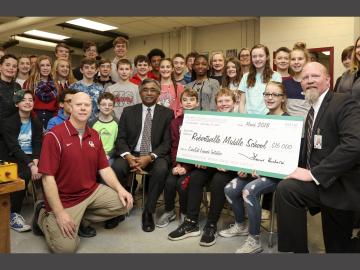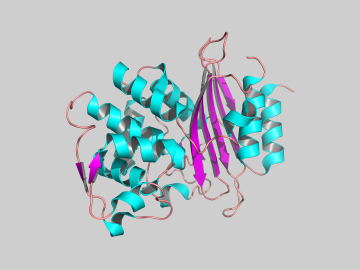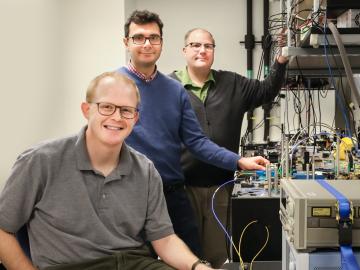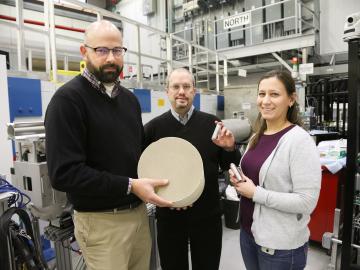
Filter News
Area of Research
- (-) Energy Science (48)
- (-) Supercomputing (23)
- Advanced Manufacturing (2)
- Biological Systems (2)
- Biology and Environment (4)
- Building Technologies (2)
- Computational Biology (1)
- Energy Frontier Research Centers (1)
- Fossil Energy (1)
- Fuel Cycle Science and Technology (1)
- Fusion Energy (1)
- Materials (52)
- National Security (2)
- Neutron Science (28)
- Nuclear Science and Technology (14)
- Nuclear Systems Modeling, Simulation and Validation (1)
- Sensors and Controls (2)
News Topics
- 3-D Printing/Advanced Manufacturing (2)
- Artificial Intelligence (1)
- Bioenergy (1)
- Biology (1)
- Biomedical (1)
- Computer Science (5)
- Critical Materials (1)
- Cybersecurity (1)
- Energy Storage (1)
- Environment (2)
- Grid (3)
- Materials Science (1)
- Mercury (1)
- Physics (1)
- Polymers (2)
- Quantum Science (1)
- Security (2)
- Space Exploration (1)
- Summit (2)
- Transportation (4)
Media Contacts

A new method to produce large, monolayer single-crystal-like graphene films more than a foot long relies on harnessing a “survival of the fittest” competition among crystals. The novel technique, developed by a team led by Oak Ridge National Laboratory, may open new opportunities for growing the high-quality two-dimensional materials necessary for long-awaited practical applications.

Last November a team of students and educators from Robertsville Middle School in Oak Ridge and scientists from Oak Ridge National Laboratory submitted a proposal to NASA for their Cube Satellite Launch Initiative in hopes of sending a student-designed nanosatellite named RamSat into...

Nuclear scientists at Oak Ridge National Laboratory are retooling existing software used to simulate radiation transport in small modular reactors, or SMRs, to run more efficiently on next-generation supercomputers. ORNL is working on various aspects of advanced SMR designs through s...


Four technologies developed at the Department of Energy’s Oak Ridge National Laboratory have earned 2018 Excellence in Technology Transfer Awards from the Federal Laboratory Consortium for Technology Transfer (FLC). The FLC is a nationwide network of more than 30...


Researchers are looking to neutrons for new ways to save fuel during the operation of filters that clean the soot, or carbon and ash-based particulate matter, emitted by vehicles. A team of researchers from the Energy and Transportation Science Division at the Department of En...

A novel method developed at Oak Ridge National Laboratory creates supertough renewable plastic with improved manufacturability. Working with polylactic acid, a biobased plastic often used in packaging, textiles, biomedical implants and 3D printing, the research team added tiny amo...

Yarom Polsky’s diverse background in private and public-sector research has given him a knack for recognizing opportunities to advance the state-of-the-art, and he parlays that knowledge into successful innovation as an engineer, group leader, and



